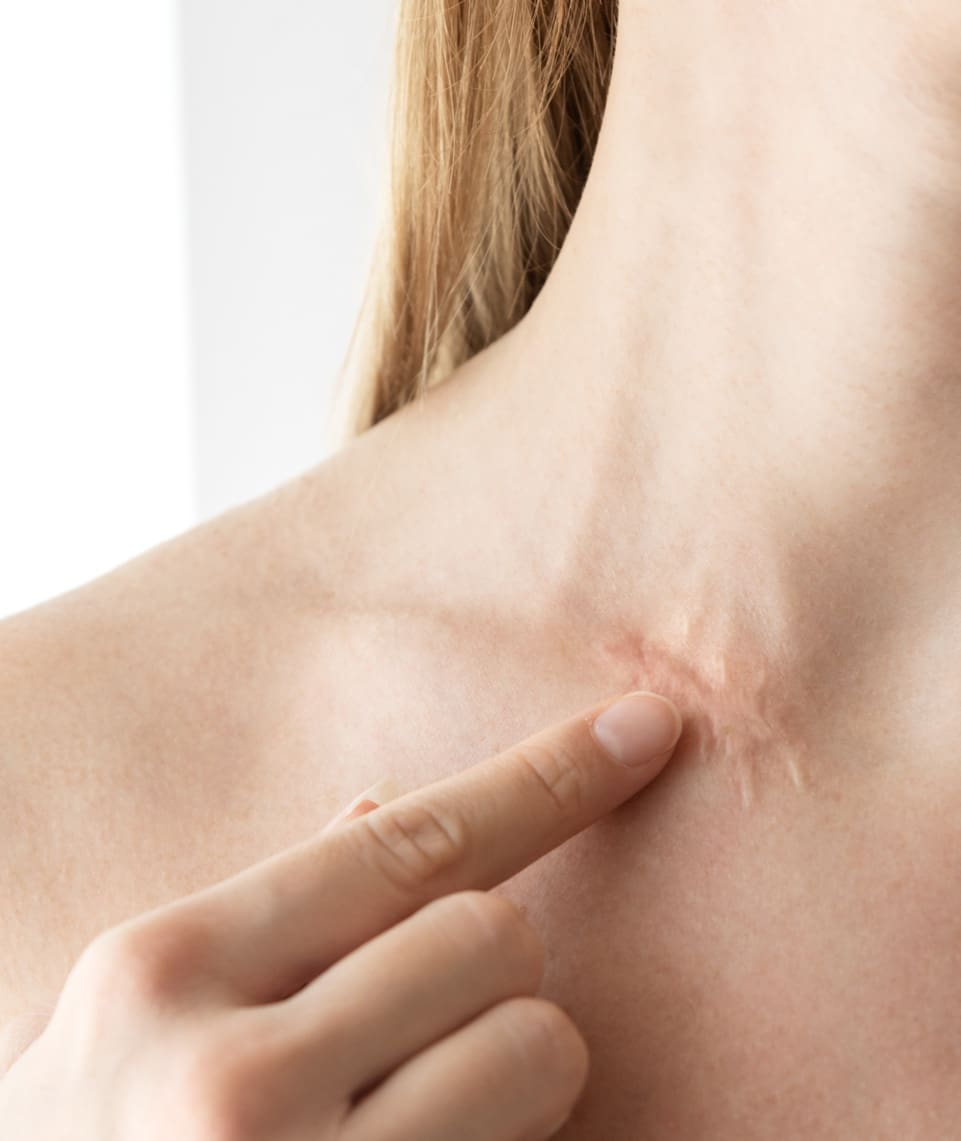Comparing Laser Scar Removal to Other Scar Treatment Options
- aesthatic clinic
.jpg/v1/fill/w_320,h_320/file.jpg)
- Oct 30, 2024
- 3 min read
Scars can be a reminder of past injuries, surgeries, or acne, and many individuals seek treatment to minimize their appearance. Among the various options available, laser scar removal has gained significant popularity due to its effectiveness and minimal invasiveness. However, it’s essential to compare this method with other scar treatment options to determine the best choice for your specific needs. In this guide, we’ll explore Laser Scar Removal In Dubai alongside alternatives such as topical treatments, microneedling, chemical peels, and surgical interventions.
1. Laser Scar Removal
Overview: Laser scar removal utilizes focused light beams to target and break down scar tissue, promoting new skin growth and reducing scar visibility.
Types of Lasers:
Ablative Lasers: Remove the outer layer of skin, making them effective for deeper scars.
Non-Ablative Lasers: Stimulate collagen production without removing skin layers, ideal for milder scars.
Pros:
Quick recovery time.
Minimal discomfort with topical anesthesia.
Can effectively treat a variety of scars (acne, surgical, keloid).
Cons:
Requires multiple sessions for optimal results.
Potential side effects like redness, swelling, or changes in pigmentation.
Higher cost compared to some other treatments.

2. Topical Treatments
Overview:Topical treatments include creams, gels, and silicone sheets applied directly to the scarred area to improve texture and appearance.
Examples:
Silicone Gel Sheets: Help flatten and soften raised scars.
Hydrocortisone Creams: Reduce inflammation and redness in hypertrophic and keloid scars.
Retinoids: Promote cell turnover, improving the appearance of atrophic scars.
Pros:
Non-invasive and easy to apply at home.
Generally lower cost than laser treatments.
Available over-the-counter (OTC) options.
Cons:
Results can take several weeks to months and may not be dramatic.
Not suitable for all scar types (e.g., deep scars may not respond).
Requires consistent use for effectiveness.
3. Microneedling
Overview:Microneedling involves using fine needles to create micro-injuries in the skin, which stimulates collagen and elastin production, helping to improve the texture and appearance of scars.
Pros:
Minimal downtime with quick recovery.
Effective for various scar types, including acne scars.
Enhances the absorption of topical treatments.
Cons:
Results may take several sessions to appear.
Some discomfort during the procedure.
Possible side effects include redness and swelling.
4. Chemical Peels
Overview:Chemical peels use a chemical solution to exfoliate the outer layer of skin, encouraging the growth of new skin and improving the appearance of scars.
Types:
Superficial Peels: Target the outermost layer for mild scars.
Medium Peels: Penetrate deeper, suitable for moderate scars.
Deep Peels: Require more downtime but can be effective for severe scarring.
Pros:
Can improve overall skin texture and tone.
Non-invasive with minimal recovery time for superficial peels.
Cost-effective compared to laser treatments.
Cons:
Risk of hyperpigmentation, especially in darker skin tones.
Results can vary based on the type of peel and individual skin response.
Multiple sessions may be needed for optimal results.
5. Surgical Interventions
Overview:Surgical options, such as scar revision or excision, involve removing the scar tissue or altering the surrounding skin to improve appearance.
Types:
Scar Revision Surgery: Reshapes and resizes the scar.
Subcision: Releases tethered scar tissue beneath the skin.
Pros:
Can produce significant changes in severe scars.
Immediate results compared to other methods.
Cons:
Invasive with a longer recovery time.
Potential for new scarring from the surgery.
Higher risk of complications and requires skilled practitioners.
6. Choosing the Right Option for You
When considering scar treatment, several factors should influence your decision:
Scar Type and Severity: Some scars may respond better to specific treatments. For example, raised scars might benefit more from laser removal or surgical intervention.
Skin Type and Tone: Certain treatments, like chemical peels, may not be suitable for darker skin tones due to the risk of hyperpigmentation.
Budget and Cost: Evaluate the costs associated with each treatment, including potential follow-up sessions.
Time Commitment: Consider the time required for recovery and the number of sessions needed for each treatment.
Personal Preference: Some individuals may prefer non-invasive treatments while others may be open to surgical options for more significant changes.
Conclusion
Laser scar removal offers a powerful solution for individuals seeking to minimize the appearance of scars, but it is not the only option available. Each treatment method—topical treatments, microneedling, chemical peels, and surgical interventions—has its unique benefits and drawbacks. By understanding these options and evaluating your specific needs, you can make an informed decision about the most suitable scar treatment for you. Consulting with a qualified dermatologist or skincare professional can further guide you toward achieving the best possible results for your skin.









Comments